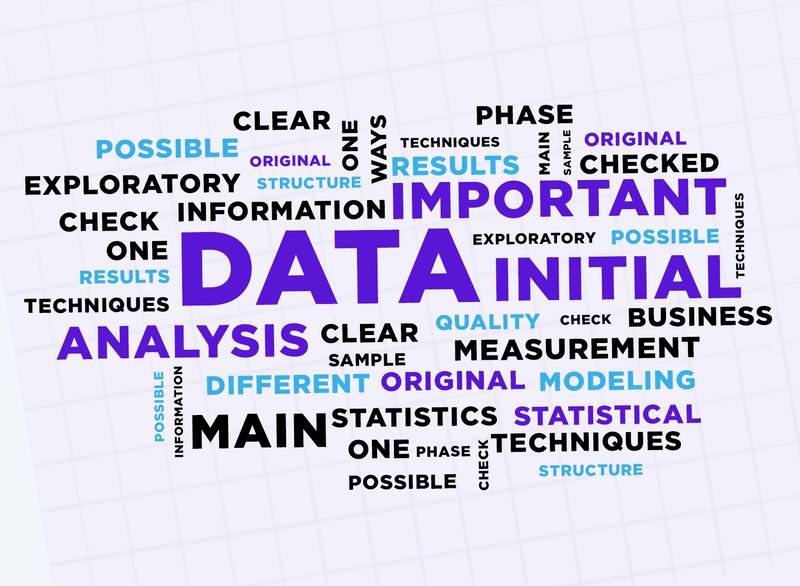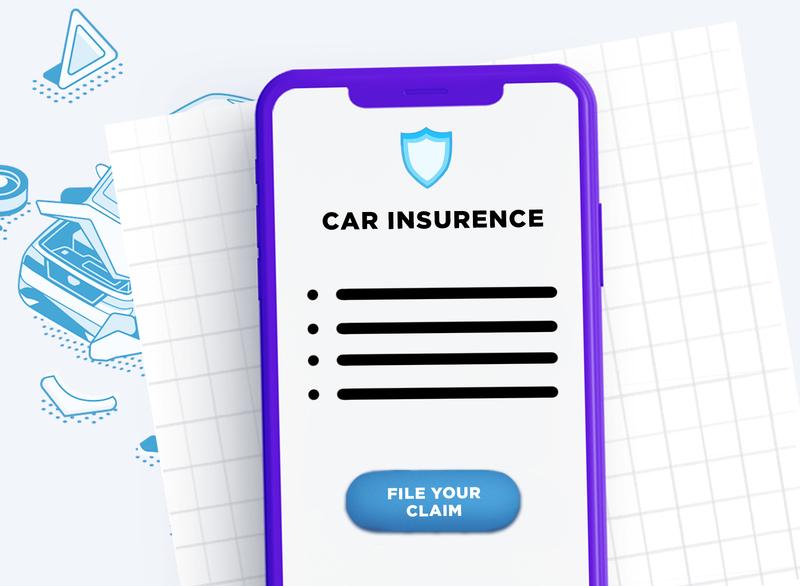The car insurance industry is overwhelmed with offers, and companies have to fight desperately for each client. If you’re also faced with such a problem, you should think about ways to strengthen your positions. There are many options to achieve the goal, and one of them is the development of an app for emergency situations on the road.
By building a car insurance application, you significantly increase your chances to succeed and join the market leaders. According to Google, these apps are increasingly appearing among search queries, and every year the trend is becoming more relevant. It convinces better than any words that it’s time to use mobile technologies to scale your business.
So, are you ready to create a car insurance app? Read the article with all the details!
Trends
Modern people (especially millennials) are fond of hi-tech innovations, prefer to save time and money, and expect transparency in all processes. No wonder they’re huge fans of mobile technology which provides them with everything they need. The car insurance industry cannot ignore these demands of its customers, so it keeps digitizing - given the latest trends, of course!
In 2019, trends include…
#1. Full process automation
The first trend is the automation of the insurance process through the best apps for car crashes and emergencies. This leads to labor-saving and, most importantly, reducing the cost of the final product. Also, transaction processing will be greatly simplified which is an advantage too.
#2. All-in-one
Another important trend, which follows logically from the first one is the “all-in-one” approach. Its actual implementation is the appearance of the auto general insurance apps with a convenient system of drawing up an insurance act. The user doesn't need to spend time studying sites and visiting the offices of insurers. All offers are collected in one place and formed specifically at the user's request.
#3. Blockchain technology
According to surveys, insurance companies can reduce up to 30% of their expenses through the use of blockchain technology. So far, not many organizations are taking advantage of it but the number of projects in the area is growing, and the prospects regarding its use for building a car insurance application are quite promising.
Blockchain technology allows entering data on all policyholders, contracts, insurance claims and storing them in a common unchanging base to make the information available to each organization.
#4. Advanced data analysis

The trend is aimed at analyzing and assessing risks and implies more extensive work with data. Modern mobile car insurance apps, along with special equipment installed in vehicles, are just perfect for this purpose. Thanks to them, the insurer monitors the client's driving style, the actual mileage of the car, and other points on the basis of which the cost of the policy is set. In Europe and the USA, such an approach is called usage-based insurance.
Besides, customer data and information about insurance cases, which have already occurred to a particular client help to model possible future scenarios of the sort. Also, the analysis of the driving style allows rewarding accurate drivers with discounts.
The value of data in insurance has been recognized by both agencies and their clients. 74% of representatives of the insurance industry surveyed by IBM are sure that using advanced analytics creates a real competitive advantage. It's not surprising, therefore, that the number of safe-driving car insurance mobile apps with a developed analytics system is increasing.
#5. On-demand insurance
The trend concerns not only roadside emergency apps but also other life areas. As you might know, today people more and more often prefer renting an apartment through the Airbnb platform instead of using traditional ways to book accommodation. And they'd like to have the opportunity to order any service (like food delivery or dry cleaning) whenever they need to.
And insurance is no exception! Moreover, on-demand insurance is coming into fashion. A proper example: there are cases when a person who isn’t inscribed in the insurance list has to drive a car. And if there is no time to draw up a full-fledged policy, the on-demand auto emergency app for iPhone and Android would come in handy. The Scottish startup Cuvva, for instance, offers its customers to use its application to specify all the details of the trip and buy temporary insurance at any time they like (a client may choose between hourly, daily, weekly, and monthly policies).
#6. Machine learning technology
In the coming years, machine learning technology is going to be increasingly applied. By analyzing the data and user behavior, the insurance app for emergency situations would be able to more effectively adapt to the needs of a particular client and, moreover, suggest the most effective business strategies to the owners of the company.
Let's give an example. Insurance company AXA has found that only about 1% of automobile accidents involving its customers require large payments of claims. AXA uses machine learning technology to predict which drivers have the greatest risk of participating in such accidents.
#7. Lifestyle
Nowadays lifestyle services greatly influence our lives and behaviors. And the influence becomes so strong that it affects even the insurance industry. Of course, this is more about life insurance, when mobile programs help to control a person’s vital activity (say, sleep balance) in addition to assisting him to draw up all necessary registration documents. Though, apps for car crashes adopt new ideas too. And sometimes, under certain circumstances, an auto general insurance app becomes also a life-saver application.
Types of mobile car insurance apps
These mobile programs have a single goal: to serve as user assistance in matters of insurance and therefore simplify the entire process. However, there are too many competitors in the market, and you had better come up with fresh ideas for extra features to attract more customers.
That's why cool car insurance apps might as well help…
-
save users’ finances. We, the people, don’t mind saving our money, and the progressive auto insurance app giving such an opportunity greatly benefits in the eyes of the user. Here are some examples of features, which save users money:
-
tips on “economical” driving. Again, machine learning comes to the rescue. Analyzing the user's driving style, the app for emergency situations can suggest how to make it more efficient (by reducing gasoline consumption or something like that);
-
cheap gas stations. The program is able to advise where exactly it is better to refuel gasoline if you want to save money (using the location function);
-
driving rewards. Some roadside emergency apps award careful drivers with bonuses and discounts.
-
-
save time. Also, we don’t mind saving our time and energy. And therefore a number of applications offer in addition to car insurance services:
-
tips on the itinerary. You can create a car insurance app that is able to build the best itinerary to the specified point of destination and tell the user how he’s able to save time during his journey (among other things, it’ll explain which factors in the user's driving style may cause delays);
-
the simplified method of obtaining insurance claims. Undoubtedly, safe-driving car insurance mobile apps are also aimed at simplifying (which is equal to expediting!) the policy registration. You’re free to supplement your service with different features optimizing the whole process as much as possible.
-
-
reduce driver's tension and strain. The driving process is associated with understandable risk, and a smart driving app may well help in this regard. Of course, the program cannot save the driver from the dangers of the road, but it is able to:
-
provide tips on improving driving quality. Here, again, you need to recall the trend regarding machine learning.
-
optimize itinerary taking into account the safety factor. This refers to a feature that helps in planning your routes. However, the functionality will be discussed in more detail in due course.
-
help parents of teenagers. Using car emergency apps with telematics, parents of adolescent children who have already received a driver's license would be aware of how their kids behave at the wheel.
-
So we have such types of apps for car crashes as time savers, money savers, and “stress relievers” (in a manner of speaking). Choose which one you prefer before starting auto insurance app development.
Or, maybe, you have a better option? Feel free to show your imagination and come up with an even more original idea!
Car emergency apps' main features

Regardless of your choice, there is the required functionality of any auto insurance app. So be sure to consider these must-have features:
-
User account. This is the first and most obvious feature which your application obviously must-have. When talking about auto insurance apps, a personal user profile contains all the information about a particular client and his vehicle.
-
Claim form. The second most important feature concerns, of course, insurance payments. Make sure your program allows users to apply through a mobile version of the claim form.
-
Feedback. No matter how reliable your company is, your customers will still be dissatisfied with something from time to time. Let them express their displeasure with the help of a feedback form. It would allow you to solve their problem as soon as possible.
-
Live chat. If the previous feature isn’t enough, a live chat of your car insurance app for Android and iOS will do just perfectly. And remember, your operators should be available during the day (24/7 support would be the best option). Outside working hours, you can use the chatbot or ask the user to leave a message to which you’ll respond as soon as possible.
-
GPS tracking (in a real-time mode). It would be unwise to neglect the advantages of mobile devices, which make it possible to determine the user's location. A GPS feature will help the driver track his route in real-time, and you'll be able to instantly know his location in an emergency of any sort.
-
The route planner is another useful feature. It doesn't relate directly to insurance issues, but it really will appeal to your customers. They'll get a wonderful chance to plan and build their route in advance, which means they'll become active users of your smart driving app.
-
Accident help which provides the ability to make an emergency call when needed. Thanks to such a feature, a user automatically calls emergency services and receives the necessary assistance, and he does so in a few taps (which is crucial considering the circumstances).
-
Online roadside assistance. The auto emergency app for iPhone/ Android cannot do without online roadside assistance either. Moreover, such assistance includes, among other things, diverse advice to the driver, aimed at helping him in certain road traffic conditions.
-
Pay a bill. Not all companies venture into such a step, however, the all-in-one trend is gaining popularity, as we've said earlier, and it's desirable to provide your progressive auto insurance app with the option of paying a bill using a mobile program.
-
Push Notifications. To get into the number of the best roadside assistance apps, you need to communicate with the user, not only via chat but also through notifications. In addition, the feature will help to establish contact with the client by reminding him about the imminent termination of the insurance policy and the possibility to get a discount on service or by sending interesting news about your company.
Third-party integrations to build car insurance apps
We've already discussed them in the article when talking about e-commerce websites. However, the car insurance industry also requires a few third-party integrations. Let's think about what we need to build car insurance apps.
APIs
API is, in fact, a piece of code, an open-source library, which facilitates the app creation and reduces the cost of the development process. Your program gets access to certain data able to help in its further operation. When talking about building a car insurance application, you may need such APIs as:
-
Recognition of license plates (by image). The API can be useful in many cases (among other things, if you need to recognize the license plates of the hiding participant in the accident). It provides access to data from more than 100 world locations and gives an answer of high accuracy (even if the image is not of the highest quality).
-
Theft Alarm. The API is useful to all car owners who, no doubt, want to protect their property from theft. Special sensors installed on the car react to the slightest vibration and signal strange vehicle behavior by sending a special notification to the app for emergency situations on the road. At the same time, the vehicle alarm is being triggered too.
-
Ignition / Speed Control. In this case, we’re talking about the joint work of two APIs: Ignition State and Speed State. With such an approach, employees of the insurance company can find out the speed mode and analyze the operation of the engine of the client's vehicle at a given point in time (say, they'll learn if the engine is turned on or off). Data is being received by both the driver (as a user of the auto general insurance app) and the company.
-
Vehicle Status. The API allows getting all the data about a particular vehicle: year of manufacture, model, color, license plates, and so on. You must admit such information is necessary when registering the insured accident and in other similar cases.
Of course, these are just a few of the most obvious options, and your developers should give you more precise advice on what to choose to create a car insurance application you really need. Each case is unique and requires a specific solution.
Payment gateways
Remember, when discussing the most important features of your auto insurance app, we talked about bill payment? You won't be able to manage the task without implementing a payment gateway.
There are different payment systems: PayPal, Stripe, Braintree, etc. Each of them has its pros and cons, and what to choose depends on the specific case.
Therefore, instead of repeating all this once again, we’ll give only a couple of useful tips:
-
offer several payment options (e-payments, bank cards, cryptocurrency, etc.);
-
make sure the payment process is as simple as possible. Don’t confuse the user by forcing him to perform extra actions.;
-
let the user be aware of how his payment is being processed (at what stage the transaction is).
Geolocation and mapping
The integration of geolocation and mapping is needed so that your progressive auto insurance application can provide users with a few significant features we’ve described earlier (real-time GPS tracking, a route planner, etc). The easiest way to implement it in practice is to take advantage of the capabilities of the mobile devices themselves, most of which have a special GPS module (a built-in one). However, this is not the only option, and we described all of them in our article.
If you’re interested in auto insurance app development, we're happy to offer our services. We have huge experience, and our projects are the most convincing confirmation of this fact. In addition, we're ready to advise you in detail on all issues of interest.



